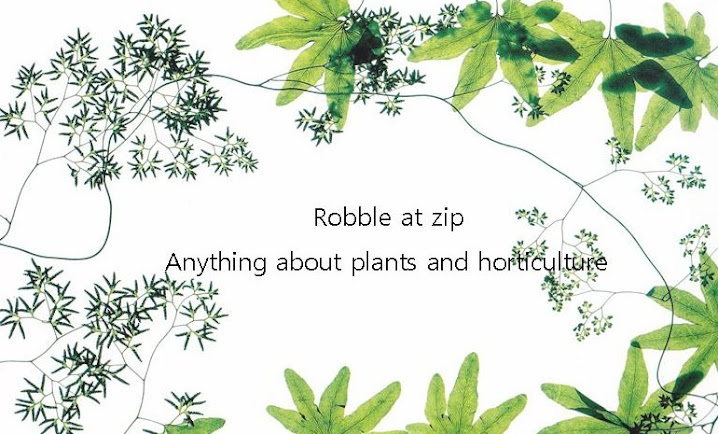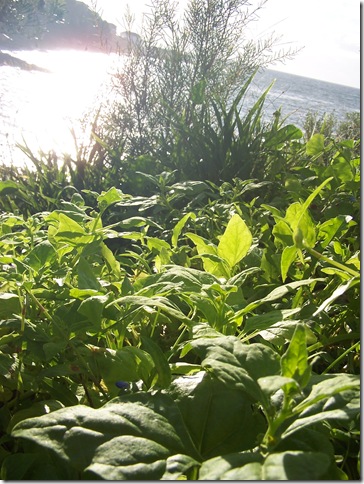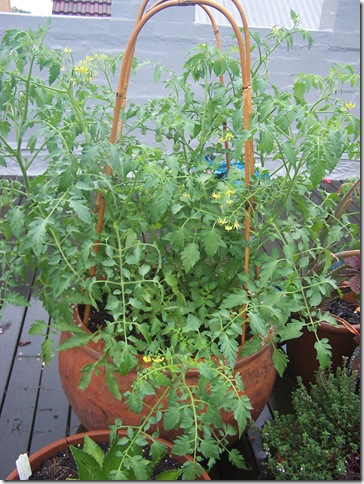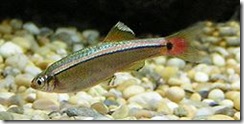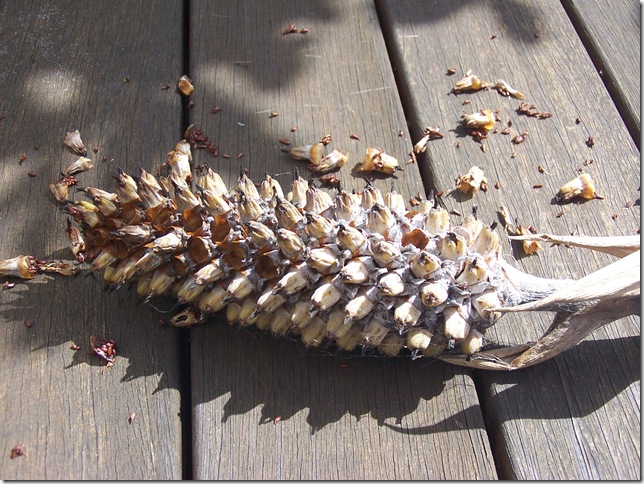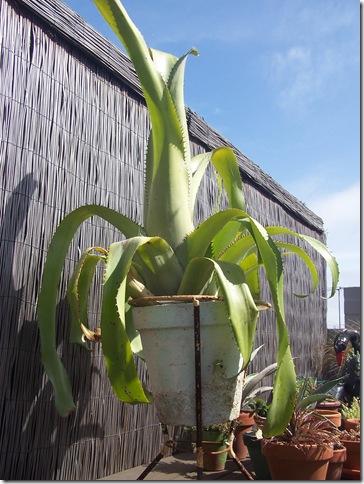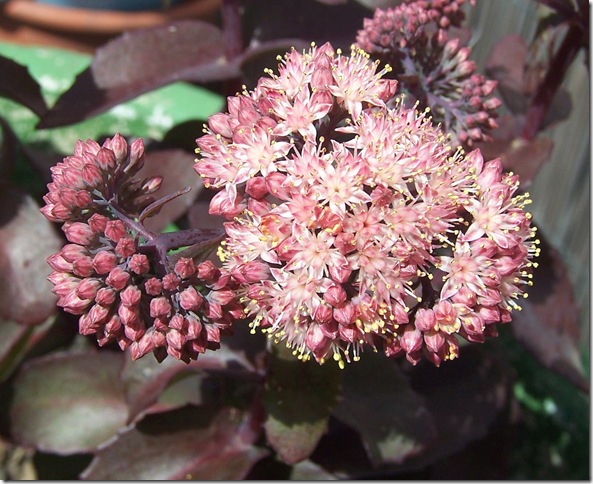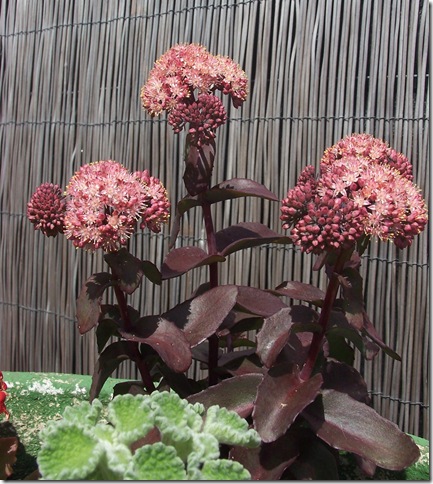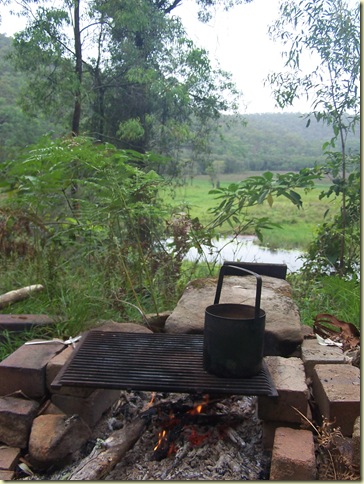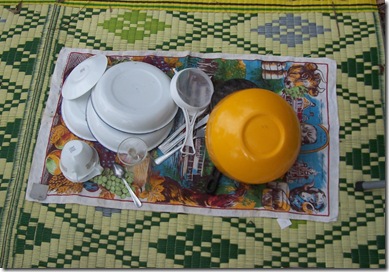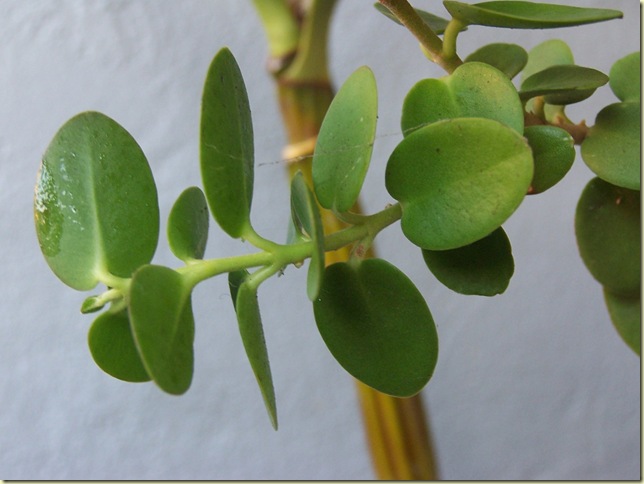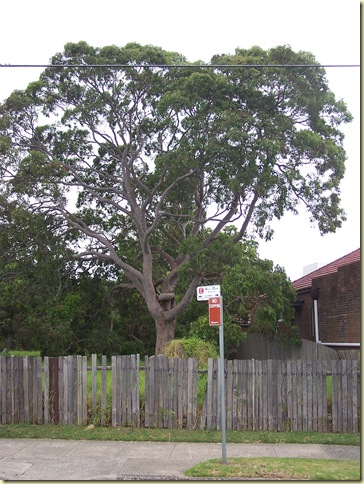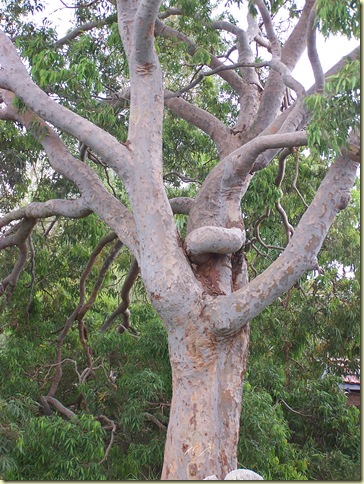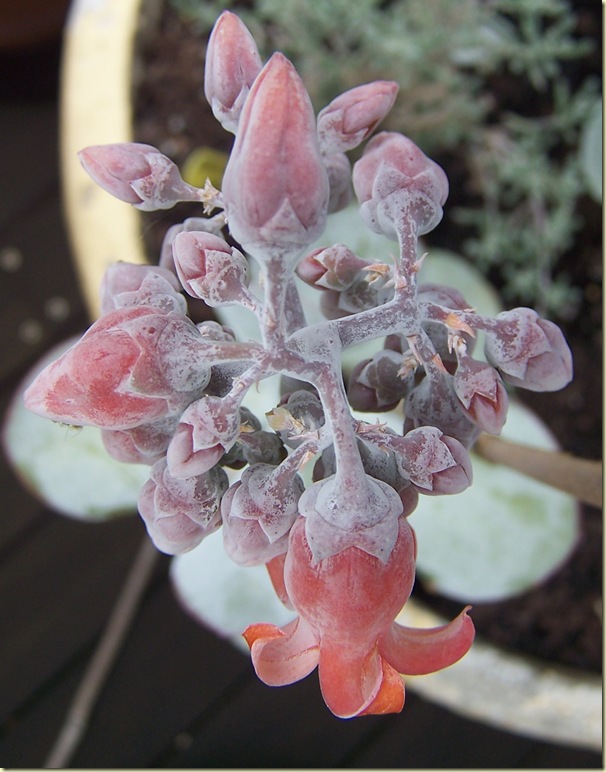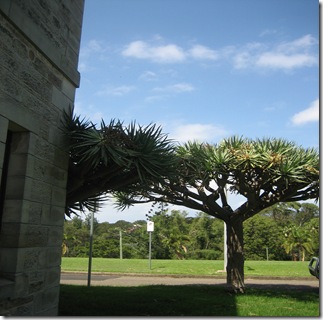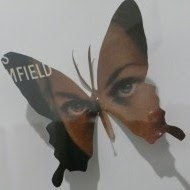Monday, February 22, 2010
I'm moving to Tumblr.com 23rd February, 2010
Im moving to tumblr.com. Please follow me here as I wont be doing any more posts on blogspot.
robbleatzip.tumblr.com
Thanks for your continued support,
regards
robble at zip
Wednesday, February 17, 2010
Warrigal Greens
Lately I have been walking around the cliffs between Coogee and Clovelly . I noticed a common ground cover that I couldn’t identify at first. It’s Tetragonia tetragoniodes, common name Warrigal Greens. It grows in moist areas close to the coast and estuaries.  The leaves of this plant are edible and were eaten by Aboriginals and early settlers. It needs to be boiled before eating to reduce the oxalate, which is poisonous.
The leaves of this plant are edible and were eaten by Aboriginals and early settlers. It needs to be boiled before eating to reduce the oxalate, which is poisonous.
“ The leaves are edible although bitter unless cooked. Captain Cook served them boiled daily to his crew and Joseph Banks thought they “eat as well, or very nearly as well, as Spinach”. Nowadays they are mainly enjoyed by native rats and other herbivores “– from Field Guide to The Native Plants of Sydney by Les Robinson
 Joseph Banks – Botanist and Explorer
Joseph Banks – Botanist and Explorer
What a fall from grace this vegetable has had! It sustained the early settlers and is now mostly enjoyed by rats.
On my bookshelf…………………..
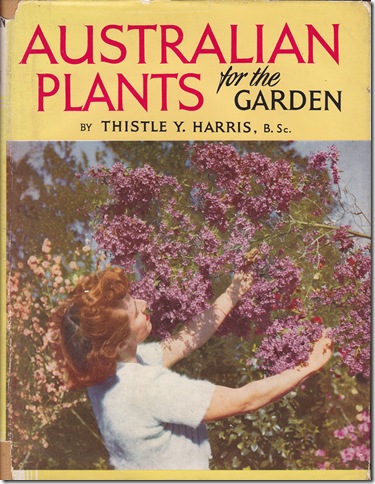 I’ve recently started studying Horticulture Certificate 4 by correspondence. This has led me to search through a lot of gardening books on my shelves. I found this gem of a book. It was given to me by a work colleague and I’d forgotten how great the illustrations are.
I’ve recently started studying Horticulture Certificate 4 by correspondence. This has led me to search through a lot of gardening books on my shelves. I found this gem of a book. It was given to me by a work colleague and I’d forgotten how great the illustrations are.
 |  |
It was published in 1953. I’ve found a few old newspaper clippings between the pages. “Gardening Without Tears, by Reg Edwards” and a recipe for prawn cocktails. I particularly love the 1950’s colour in the plates.
Friday, February 12, 2010
St Andrews Cross Spiders
The rain is still bucketing down here in Sydney. For me (and many others) its a welcome change. All of my pots are soaked and I have been moving some of cacti and succulents undercover to stop them from rotting out. Ive noticed some new insect arrivals: St Andrews Cross Spiders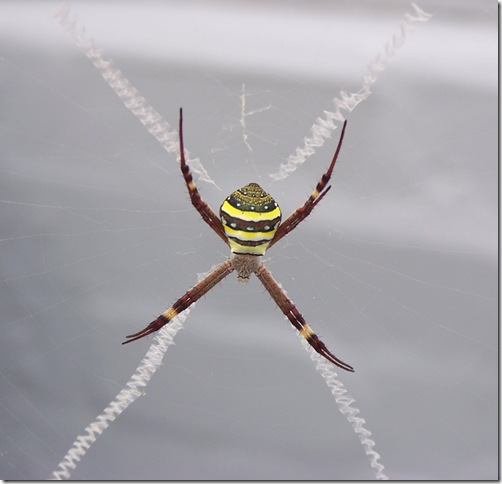 They are so called because of the silky cross at the centre of their web. This is called a stabilimentum. At first thought to stabilise the web, it is currently thought to either help capture prey or avoid predators.
They are so called because of the silky cross at the centre of their web. This is called a stabilimentum. At first thought to stabilise the web, it is currently thought to either help capture prey or avoid predators.
EDIT: Today, 17th February, I was standing on the balcony, brushing my teeth and a wattle bird landed on a nearby branch and ate the above spider, right in front of me. C’est la vie!

Tuesday, February 9, 2010
Rain – and little yellow mushrooms……….
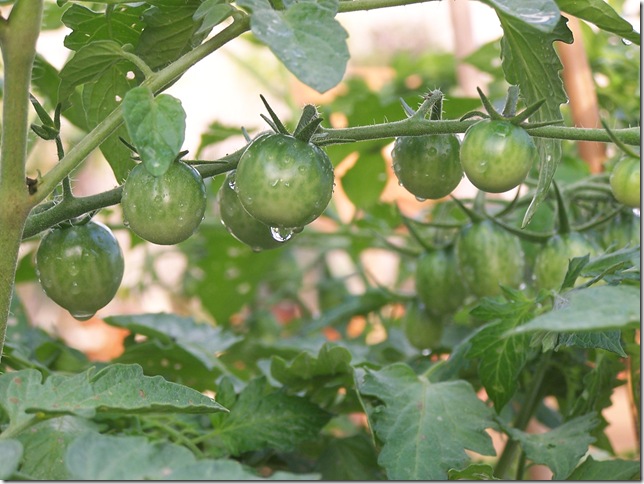
We’ve been having lots and lots of rain lately. I moved my pots out to catch it. I think theres no substitute for rainwater. I have also been indulging in my somewhat obsessive habit of collecting rainwater. As I cant have a rainwater tank, I now have lots of containers of rainwater, which are fast filling up with lots of mosquito larvae. I might have to move my new fishes around a bit!
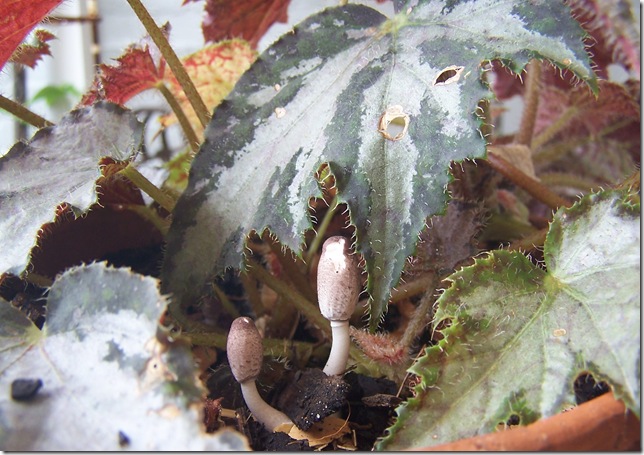 I’ve also noticed lots of mushrooms coming up in the pots. I checked, they are common and pretty harmless, although I’m not planning to eat them
I’ve also noticed lots of mushrooms coming up in the pots. I checked, they are common and pretty harmless, although I’m not planning to eat them | 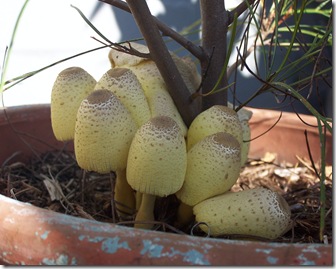 |
Friday, February 5, 2010
Blue Banded Bees
After a very mixed week, I was thrilled to find these critters buzzing around on my verandah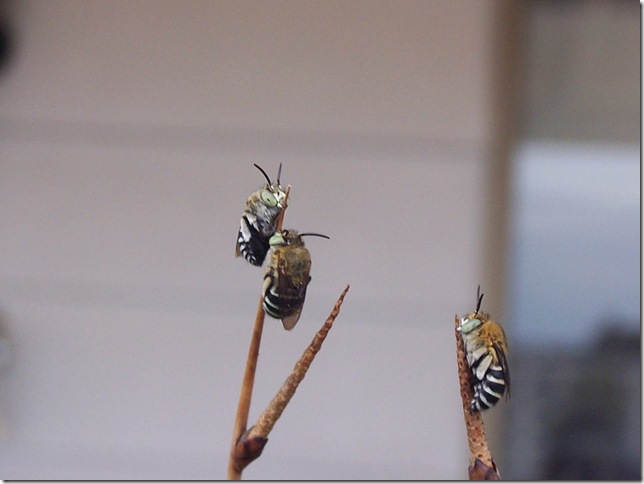 They are called Blue Banded Bees or Amegilla sp. and are native to Australia. They are, at the moment, all huddled on the tips of Lepiromia articulata which is in my watergarden. Its been pouring with rain for 2 days and they are all soaked
They are called Blue Banded Bees or Amegilla sp. and are native to Australia. They are, at the moment, all huddled on the tips of Lepiromia articulata which is in my watergarden. Its been pouring with rain for 2 days and they are all soaked
Sunday, January 31, 2010
White Cloud Mountain Minnows
I mentioned in an earlier post that I had started a watergarden. Its an old metal washtub with some reeds in it, as well as some Thai mint and a native Australian waterplant called Marsillea. Every time I look into the water, its full of wrigglers (mosquito larvae) The best solution to get rid of the wrigglers was to get some fish.
I went to Aqua Pets in Bondi Junction and got 6 Tanichthy albonubes, common name White Cloud Mountain Minnows. They are hardy fish which can survive warm or cool water temperatures. They are extinct in their native habitat of Guandong, China, and were originally discovered by a Boy Scout leader in the 1930’s. They are a member of the Carp family, which is already setting off alarm bells in my head as Carp are a huge pest here in Australia and are decimating native fish populations and causing widespread riverbank erosion, here in Australia.
Like many other plant and animal species, they are great when kept in a confined area, but become a problem when exposed to another environment where they may dominate and takeover because of their ability to thrive in a variety of situations.
I don’t know whether this species of fish could ever become a problem in the wild, but its always good to be aware of the potential.
Saturday, January 30, 2010
Aechmea bromeliifolia albobracteata
I finally cut the flower head off of this plant as its past its prime. Something came along in the night and had a go at extracting some seeds from it. I love that the plants on my rooftop attract birds and insects and provide some sort of environment for them
Sedum “Purple Emperor”
Tuesday, January 26, 2010
Sydney Botanical Gardens
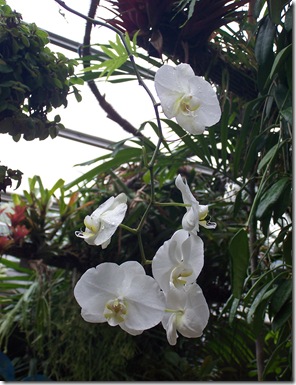 |  |
 |  |
 |
I recently went to The Sydney Botanical Gardens. The tropical hothouse is fantastic. Lots of exotic , tropical plants growing on different levels, so that you can see things from different perspectives. If the Gardens had more funding, I think that this would be a good collection to develop. Its really popular whenever I visit the gardens and its not cheap to get in. Theres is another glass pyramid type hothouse opposite that has mainly Australian tropical plants. Its pretty boring, and needs some work. There are lots of bare patches and the plants dont look very luscious.
The flying foxes that have colonised the gardens really depressed me. They are destroying a lot of the older trees in the gardens. Their droppings are everywhere and smell putrid. When is something going to be done about this problem. It seems to have been going on for too long.
Camping – January, 2010
Saturday, January 23, 2010
Hoya densifolia (I think)
I was in Far North Queensland a couple of years ago and bought this unidentified Hoya from a small local nursery that didn’t have any other Hoyas for sale. I have been trying to identify it and have found that there is a lot of debate between Hoya collectors about the 2 species Hoya cumingiana and Hoya densifolia.
I think this is H. densifolia. It has small leaves 3cm long x 2cm wide. The new branches are upright at first, then cascading, not twining. There are 13 flowers in the umbel. It is apparently from the Phillipines and Indonesia.I love how the flowers look all waxy.
Significant Trees # 1
I spend a lot of time driving around Sydney and various trees and plants become landmarks. They might be in a public place or in someones front garden. They might be something that you dont give much thought to until they flower spectacularly at the same time each year. Sometimes they disappear all of a sudden because the council has decided that they are dangerous or a developer has moved into a site and unceremoniously mowed down all things green.
With this in mind, I thought I might start an irregular post of some of my favourite landmark plants
The first one is an Angophora costata, or Sydney Red Gum. Its on a vacant block between a newsagent and an old house. Its on Rocky Point Road in Sans Souci. Its a beautiful tree that sits right in the middle of the block. I worry that sooner or later the block will be sold and the tree will be removed.I hope not!
Angophora costata is known for its curling limbs and its smooth pinkish brown bark. Its often seen growing from crevices in rocks.
Wednesday, January 20, 2010
Cotyledon orbiculata
I have been reading another instalment on jeansgarden.wordpress.com about posting photos on your blog via Window Live Writer. As someone who has never had any computer tuition, this information is gold! Also this week have rediscovered a favourite blog of mine A succulent obsession which has fantastic photography and is invaluable for identifying succulents
Saturday, January 16, 2010
Header and Layout
Friday, January 15, 2010
Dahlias
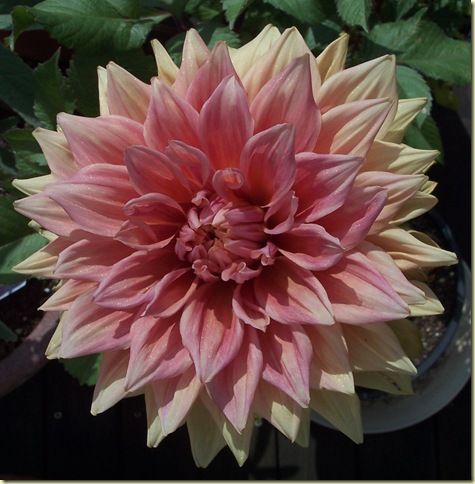
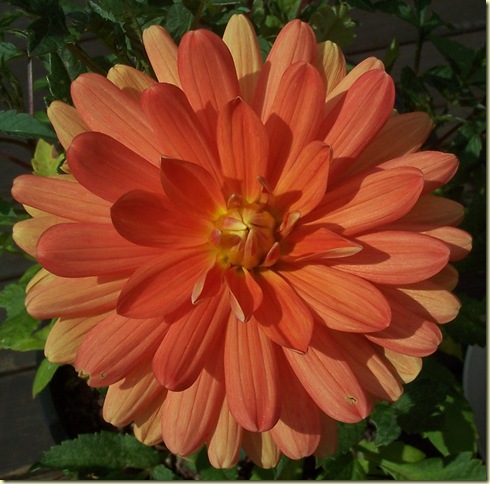
I never used to like Dahlias much, but my friend, Don, bought me some bulbs and Ive become a little bit fascinated by them. They remind me of Chrysanthemums, they look a little bit Chinese and these huge showy flowers manifest from little bulbs. They dont really fit with all of my other plants, but I have realised thats its a great pleasure to watch the development of flowers, when you go outside to inspect your garden. Another friend cant believe how much time I spend inspecting my plants.But for me, that is the best part!
Monday, January 11, 2010
Draceana Draco – Callan Park
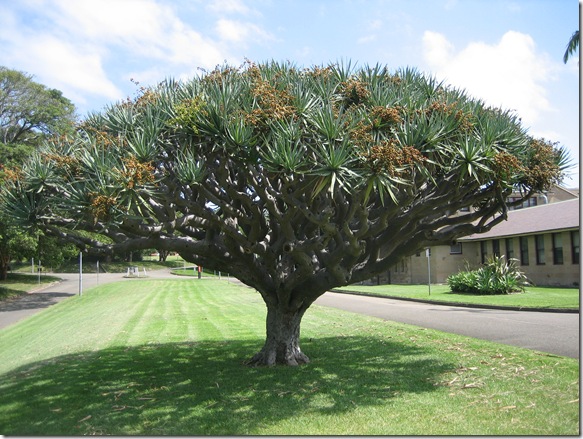
I was in Callan Park today. Its an area of land that was originally bought in 1839 as an estate. In 1873 it was bought by the Colonial Government to be the site of a “Lunatic Asylum”. At the time the grounds were 104.5 acres. The parklands were designed by the Director of the Sydney Botanical Gardens. At various stages since then it has fallen into disrepair due to neglect.

There is a bit of a sad feeling around the place, due to its long history as a psychiatric hospital. It was also used to treat shell shocked soldiers returning from WW1.
Friends of Callan Park have a very informative website http://www.callanpark.com/ with more details of its history
There are some very significant trees in the gardens, including some Dracaeana draco that I think must be about 100 yrs old.Originally from the island of Tenerife in the Canary Islands, they can live to 400 years. These examples are very striking and are well displayed in the huge open landscape.I have to say though that they are a strange choice of tree to put in the front area of a psychiatric hospital. They look like giant brains, and could be a bit intimidating.

Sunday, January 10, 2010
Pelargonium sidioides
This is a test run as I am trying out Window Writer to blog as it seems to be a lot easier. Thanks so much jeansgarden.wordpress.com for your fabulous posting on how it all works. I think blogging is going to get a lot better from now on!Also, I have got a new layout. Im happy because my pictures are bigger and not cut in half
Saturday, January 9, 2010
Watergarden
 |  |
 |  |
